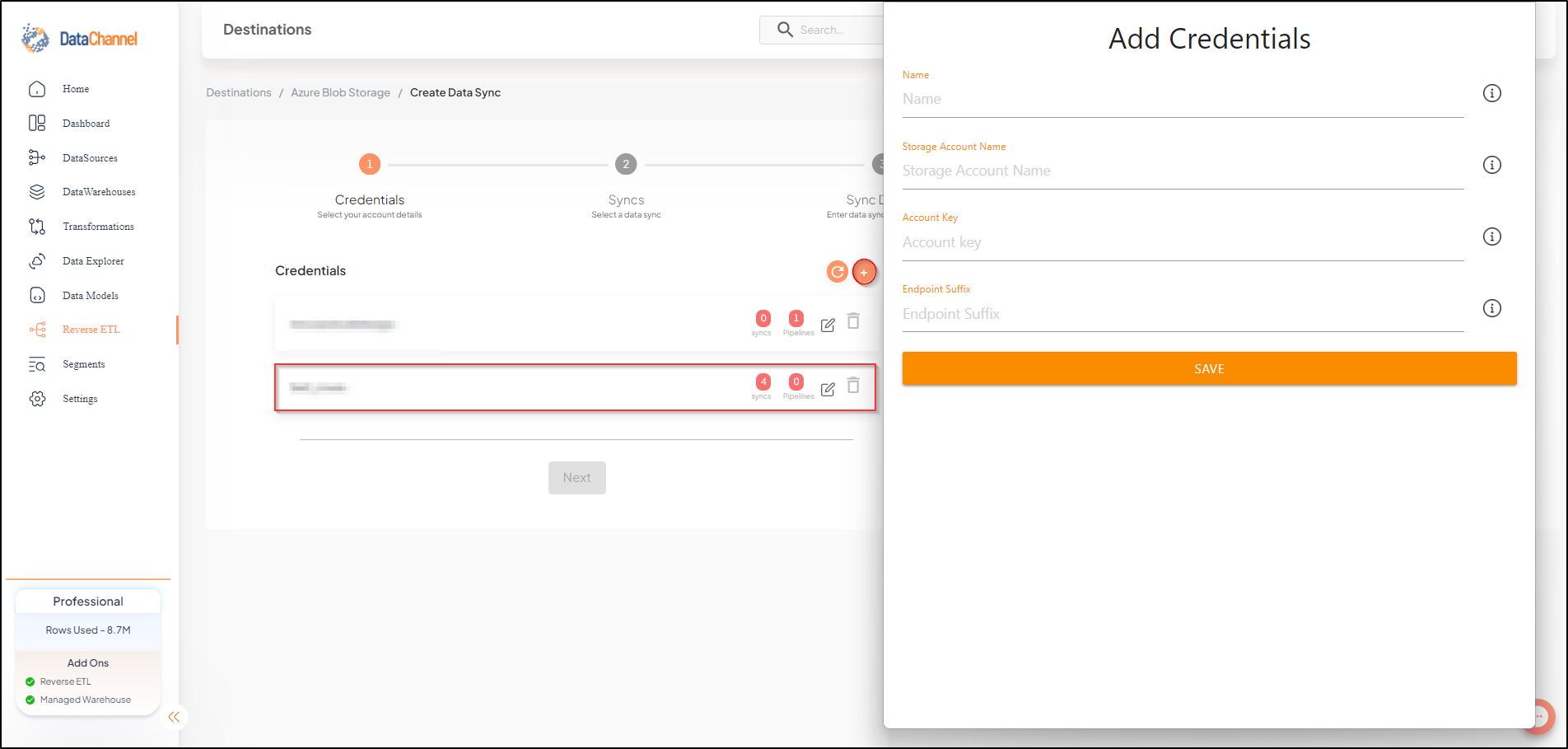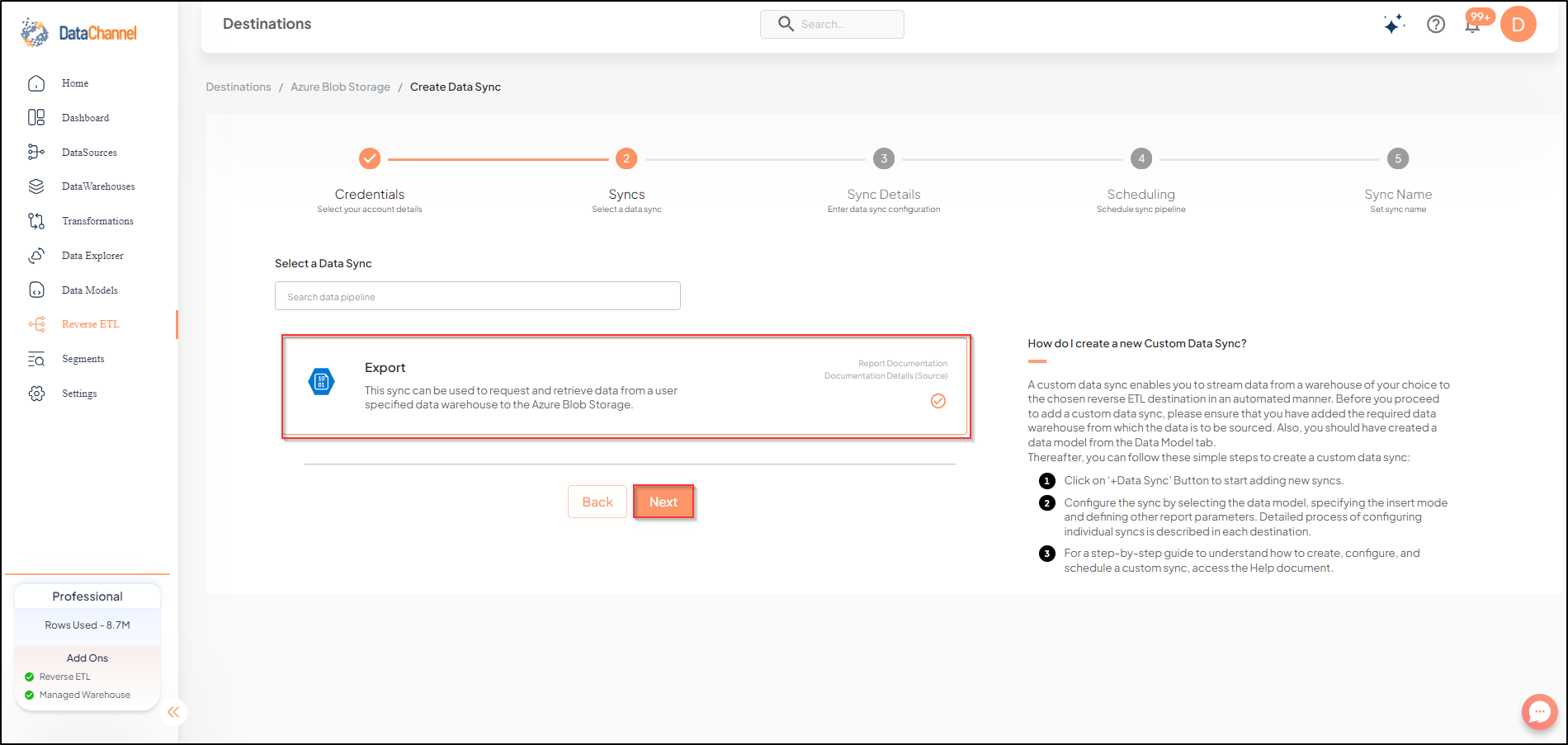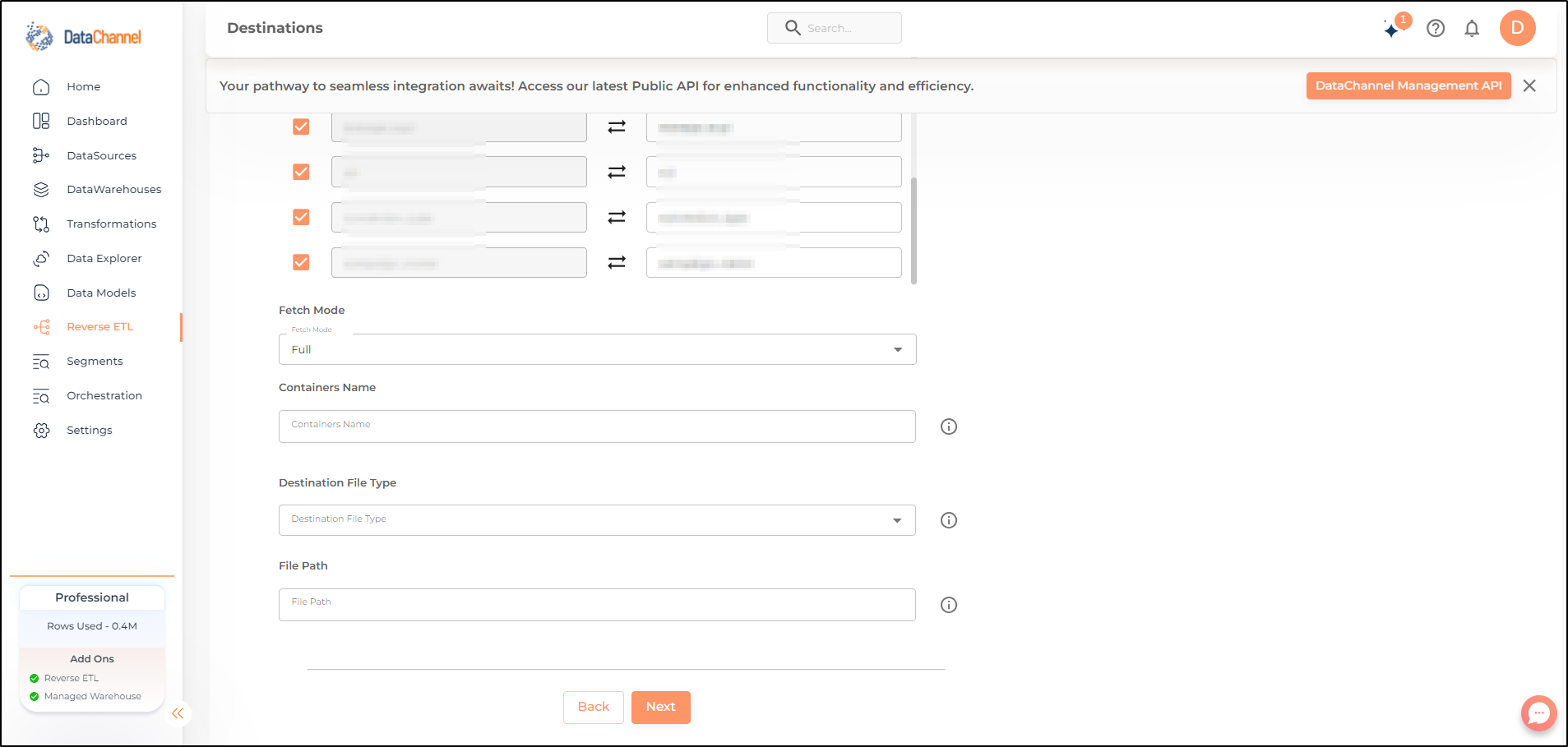Export
This sync enables moving data from a user specified datawarehouse to the Azure Blob Storage.
You can find more information on Azure Blob Storage documentation page
Configuring the Credentials
Select the account credentials which has access to relevant Azure Blob Storage account from the given list & Click Next

Data Sync Details
- Data Sync
-
Select Export & click Next

- How do you want to fetch data?
-
Select whether you want to fetch data from the Data Model or from Table/ View.
- Data Model
-
In case you want to fetch data using Data Model, select the data model that you would like to use for this sync. Checkout how to configure a model here.
- Data Warehouse
-
In case you want to fetch data using Table/ View, select the data warehouse that you would like to use for this sync.
- Table / View
-
Select the Table/ view in the data warehouse that you would like to use for this sync.
Setting Parameters


| Parameter | Description | Values |
|---|---|---|
Fields Selection |
Required Select the field(s) you would like to push in your Azure Blob Storage here. You can also rename one or more field(s). To push all the fields, simply select SELECT ALL. |
{Destination Field, Model Field} |
Fetch Mode |
Required This refers to the manner in which data will get updated : FULL will update the entire column(s) from the selected data, INCREMENTAL will update the fresh record(S) added since last fetch |
Default Value: FULL |
Incremental Key Dependant |
Required (If Fetch Mode = Incremental) Choose the field which will serve as Incremental key. |
Select Incremental Key |
Container Name |
Required Enter the container name in lowercase. |
String Value |
Destination File Type |
Required Select the destination file type, that is whether to export data in CSV or newline delimited JSON or Apache Parquet or Apache Avro. |
{CSV, txt, parquet, avro} |
Include Headers Dependant |
Required (If Destination File Type = CSV) Choose whether to include headers in the exported CSV file. |
{Yes, No} Default Value: Yes |
File Path |
Required Enter the absolute path where the created file will be saved/uploaded. Supported datetime string formats such as tmp/dc_s3_csv_%Y-%m-%d %H:%M:%S. You can find further references at https://strftime.org/ |
{tmp/dc_s3_csv_%Y-%m-%d %H:%M:%S} |
Data Sync Scheduling
Set the schedule for the sync to run. Detailed explanation on scheduling of syncs can be found here
Dataset & Name
Give your sync a name and some description (optional) and click on Finish to save it. Read more about naming and saving your syncs including the option to save them as templates here
Still have Questions?
We’ll be happy to help you with any questions you might have! Send us an email at info@datachannel.co.
Subscribe to our Newsletter for latest updates at DataChannel.